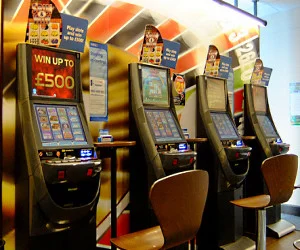The Gambling Commission’s annual report on gambling among 11 to 17 year-olds in Great Britain shows little change in the prevalence of gambling, but highlighted a “statistically significant” jump in minors showing signs of problem gambling.
The 2024 Young People and Gambling Report features responses from 3,869 people within the 11-17 age group. Ipsos conducted research in schools, with pupils completing online self-completion surveys in class.
Stand-out findings include more than one quarter of young people using their own money to gamble in the past year. This includes 21% who spent money on regulated forms of gambling. However, the figure is consistent with last year’s report, which found 26% spent their own money on gambling.
As for what young people spend money on, gaming machines such as claw grabbers and coin pushers were most popular. These are classed as Category D machines by the Gambling Commission, meaning there are no age restrictions in place.
Other forms of gambling popular among young people tended to involve wagers between friends and family. This includes betting against, or playing cards with, family and friends.
If gaming machines are removed from the equation, 6% of 11 to 17-year-olds spent money on gambling. This up from 4% in 2023.
Report flags 1.5% of young people as having a problem
The report also used the Diagnostic and Statistical Manual of Mental Disorders Fourth Edition – Multiple Response Juvenile (DSM-IV-MR-J) screen to assess whether respondents’ answers suggested problems with gambling. This is a psychometric tool used to give young people a score for gambling harms similar to the Problem Gambling Severity Index (PSGI), with anything above four considered evidence of problem gambling.
DSM-IV-MR-J features nine items to assess if respondents who gamble are defined as experiencing problems. These include thinking about or planning to gamble, using gambling to escape problems and gambling leading to arguments with family or friends.
The proportion of young people who scored four or more was 1.5%, with these seen as experiencing problem gambling. The figure is quite a jump from last year’s 0.8% rate – and flagged as “statistically significant” by the Commission – suggesting problem gambling may be on the rise among young people.
Some 1.9% scored two or three, placing them at-risk, while 23% scored either zero or one, meaning they do not experience problems with gambling. However, the report also pointed out that 73% of young people have never gambled based on the survey.
Young people who think about gambling or planning to gamble has increased from 3% to 7%. Those wanting to spend more doubled from 2% to 4%, while those taking money without asking for the purpose of gambling jumped from 6% to 11%.
Also in this area, the proportion of young people who lied to family and friends about gambling was up from 1% to 3%. Finally, those who lost money and returned each time the following day to try and win it back doubled from 2% to 4%.
Over half of young people have experience of gambling
Looking more broadly at young people that have some experience of gambling, the report found 52% of young people have gambled in some form during their lives – though not necessarily for money. Of those that have, 44% gambled in the past 12 months. These statistics cover five categories of gambling: lottery, gaming machines, bingo, betting and casino.
Games and gaming machines are most common among young people. Arcade machines such as claw grabbers (which are legal to play for the age range) drew the most players. Of all respondents, 30% said they played in the past year. Some 20% had placed some form of bet, 12% played bingo, 9% lottery games and 4% casino.
When gambling, 73% said they were alone on the most recent occasion they had gambled. It was also stated 15% of respondents were stopped from gambling at some point because they were too young.
Gambling the most popular risk-taking behaviour
Among a broader range of risk-taking behaviours, gambling was out in front. In the past 12 months, 37% drank alcohol, 15% used an e-cigarette or vape, 8% smoked a tobacco cigarette and 7% took illegal drugs. All of these are lower than the 44% rate across gambling products.
As to why young people chose to spend money on gambling, 80% said they saw it as something fun. Some 26% said gambling makes them feel happy, an increase from 17% in the previous year. On the flip side, 29% said it did not make them happy, with 23% unsure as to how they felt.
The report also flagged that of those who gambled, 26% had seen family members they live with gamble. From this group, 8% said such behaviour had resulted in arguments or tension at home. However, 12% said gambling by a family member helped pay for things at home such as holidays.
Majority of youths have seen gambling ads
Among other findings in the report was data on exposure to gambling advertising. Of those surveyed, 62% had seen adverts online and 64% offline, up from 53% online and 55% offline last year.
As to the most common location for gambling adverts, 54% of young people saw content on television and 52% on a mobile app. Social media was also responsible for 46% of exposure to adverts in the past year, while 17% of young people say they follow a gambling company on social media.
On top of this, 8% who saw such content said they had prompted by the adverts to spend money on gambling.
GC: Parents have a responsibility to protect children
Commenting on the report, Commission executive director Tim Miller said the regulator is committed to protecting young people from gambling harm. This is reflected in the recent changes to regulation in Britain.
Since 30 August, all licensees are required to have procedures that require their staff to check the age of any customer who appears to be under 25 years of age. This is an increase from the existing ‘21 years of age’ approach. In addition, land-based licensees must now carry out age verification test purchasing.
However, Miller said the Commission and licensees can only do so much to protect young people, with their parents and schools also having key roles to play.
“[The] report also shows that young people often gamble in ways that do not require regulation, such as betting with their friends. Yet these forms of gambling can also lead to some experiencing harm,” Miller said.
“Our report points to the opportunities that parents, schools and other groups have to also help reduce gambling harm among children and young people.”



